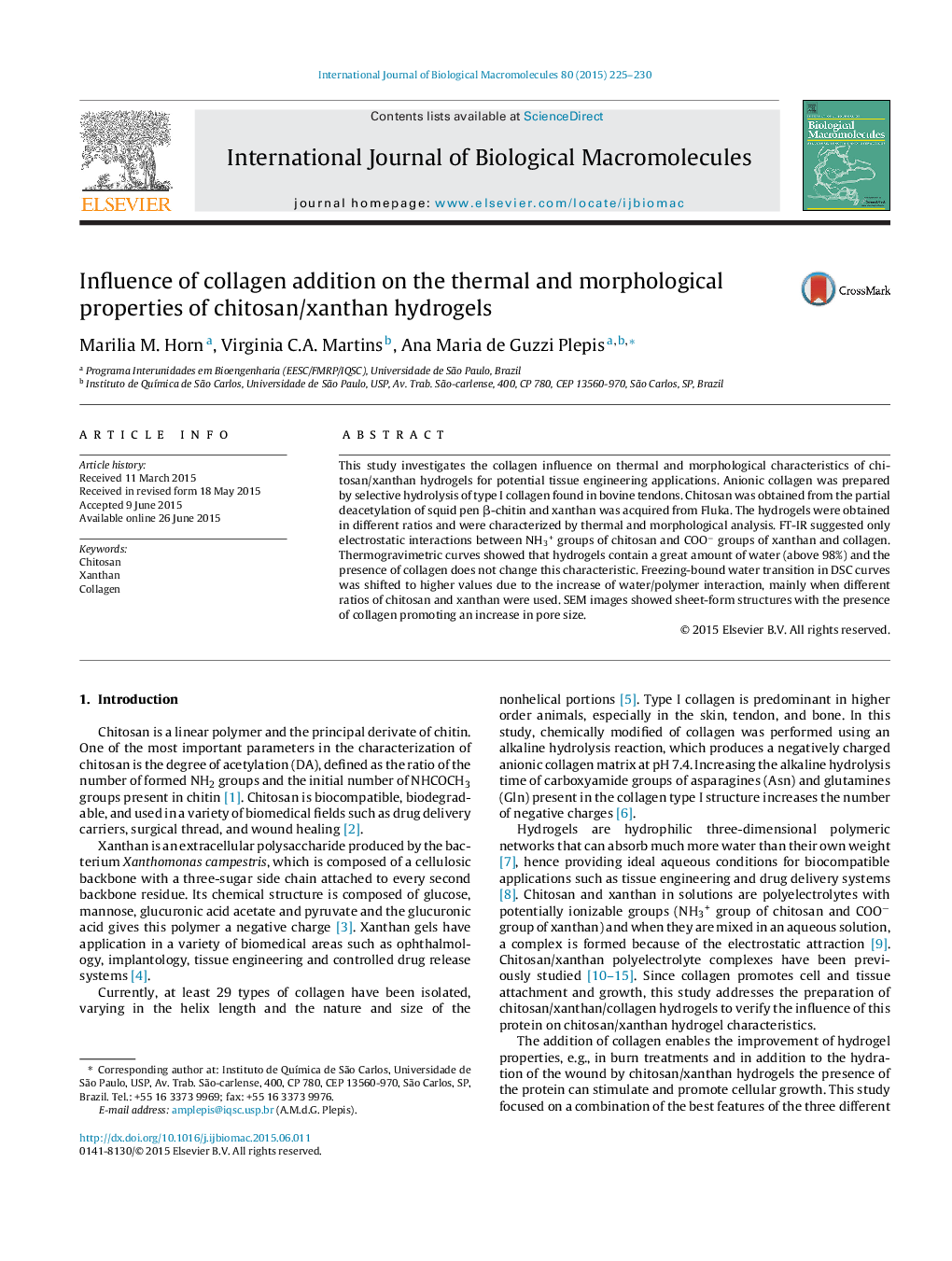| Article ID | Journal | Published Year | Pages | File Type |
|---|---|---|---|---|
| 8330501 | International Journal of Biological Macromolecules | 2015 | 6 Pages |
Abstract
This study investigates the collagen influence on thermal and morphological characteristics of chitosan/xanthan hydrogels for potential tissue engineering applications. Anionic collagen was prepared by selective hydrolysis of type I collagen found in bovine tendons. Chitosan was obtained from the partial deacetylation of squid pen β-chitin and xanthan was acquired from Fluka. The hydrogels were obtained in different ratios and were characterized by thermal and morphological analysis. FT-IR suggested only electrostatic interactions between NH3+ groups of chitosan and COOâ groups of xanthan and collagen. Thermogravimetric curves showed that hydrogels contain a great amount of water (above 98%) and the presence of collagen does not change this characteristic. Freezing-bound water transition in DSC curves was shifted to higher values due to the increase of water/polymer interaction, mainly when different ratios of chitosan and xanthan were used. SEM images showed sheet-form structures with the presence of collagen promoting an increase in pore size.
Related Topics
Life Sciences
Biochemistry, Genetics and Molecular Biology
Biochemistry
Authors
Marilia M. Horn, Virginia C.A. Martins, Ana Maria de Guzzi Plepis,
